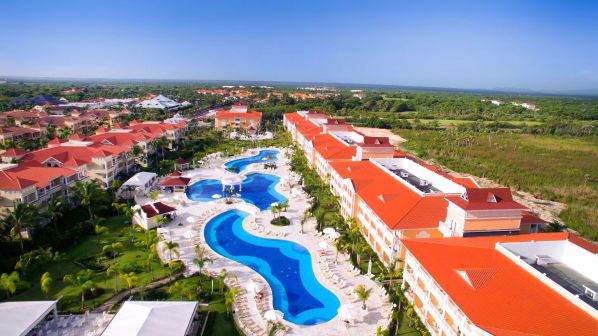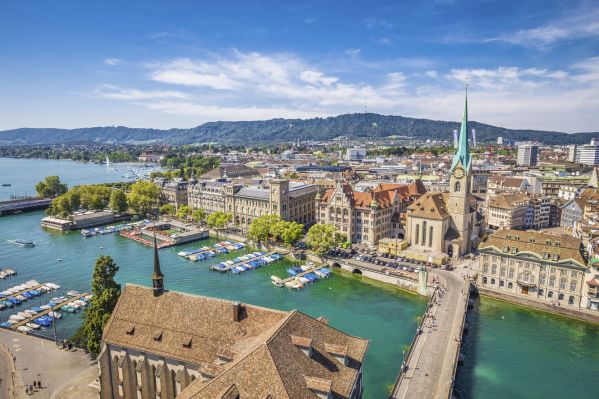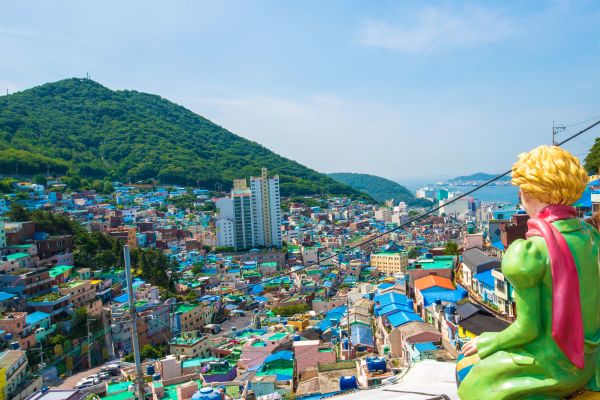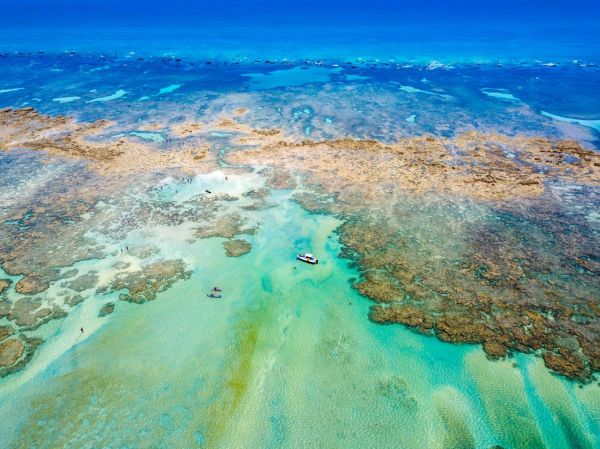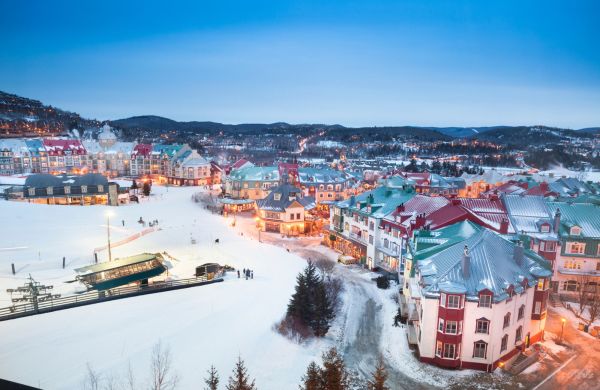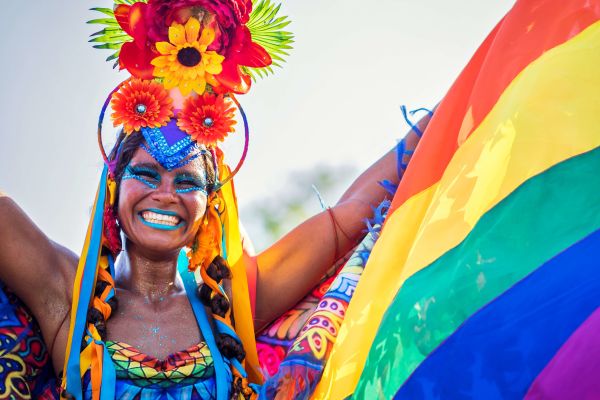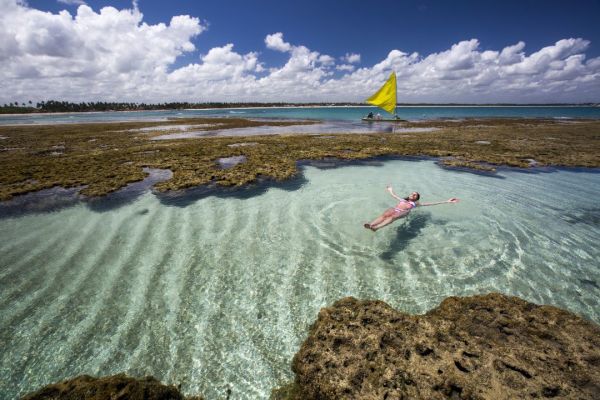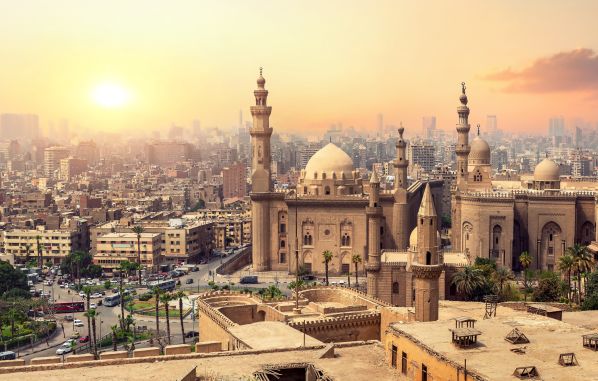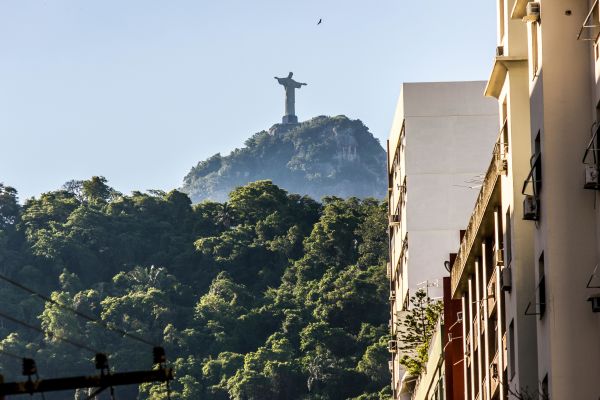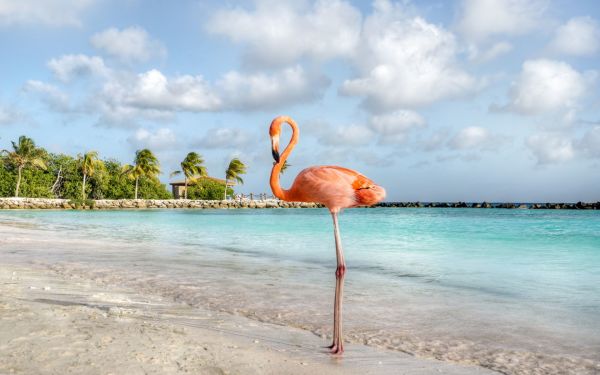What is sargassum and what are its seasons in the Caribbean?

What is it that transforms paradise into something very different from what you saw in the photos? Sargassum , a visitor as unexpected as it is controversial, has put the most coveted Caribbean destinations to the test, covering the sea and its shore with a brown carpet.
Below, we'll tell you what sargassum is , why it arrives in the Caribbean , what its seasons are, and how to deal with it so that your trip remains an unforgettable experience.
What is sargassum?
Sargassum is a type of floating, golden-brown seaweed that grows mainly in the Sargasso Sea , a vast region of the North Atlantic .
Unlike other algae that are anchored to the seabed, sargassum floats freely thanks to small gas-filled bladders called pneumatocysts , which look like small yellow balls.
These algae form large floating mats in the open ocean, providing shelter and food for fish, sea turtles, crustaceans, and birds. In the open sea, they are a vital ecosystem and an essential part of the ecological balance.

The problem begins when huge quantities reach the shores of the Caribbean , accumulating on the beach, decomposing in the sun and generating an unpleasant odor that can affect both the beauty of the landscape and the experience of travelers.
Why is it arriving in the Caribbean?
Although sargassum has always existed, in recent years its massive arrival on Caribbean beaches has become a more frequent phenomenon. This is due to several factors, including:
- The increase in nutrients discharged into the oceans by rivers flowing into the Atlantic , especially from South America, favors the growth of sargassum .
- Climate change , which warms the waters of the Atlantic and promotes the proliferation of the algae.
- Changes in ocean currents , which transport these large patches towards the Caribbean Sea .

When these algae reach the beaches, their accumulation is not only unsightly, but can also affect marine life , reduce oxygen in the water, and damage coral reefs .
Sargassum seasons in the Caribbean
One of the most important questions for travelers is: When is there sargassum in the Caribbean? Although it can vary from year to year, there are certain seasonal patterns that are worth knowing.
In general, sargassum seasons in the Caribbean tend to be concentrated between April and October , coinciding with the warmest time of year and tropical rains. However, this can vary depending on the region.
In destinations like Cancun , Playa del Carmen and Tulum , seaweed can start arriving in March or April, reach its peak between June and August, and decrease towards the end of September or October.
In Jamaica , the Dominican Republic , and Puerto Rico , the pattern is similar, although in some areas the impact may be less.
Further south, in Aruba or Curaçao , the amounts are usually much lower due to their location and the ocean currents that do not carry as much seaweed to their shores.

From November to February , the chances of finding beaches with these algae decrease significantly, making those months the ideal season for those who dream of enjoying crystal-clear waters without interruption.
How to know if there will be sargassum during your trip
While there's no foolproof way to predict the situation, satellite maps , updated reports , and apps now allow you to check sargassum conditions in real time. Many hotels and tourism authorities in each destination also publish daily reports to help travelers better plan their vacations.
Before booking, it's advisable to check:
- Specialized websites such as the Sargassum Citizen Observatory .
- Social networks of hotels and tourist destinations.
- Groups of travelers where they share updated photos of the beaches.

What are Caribbean destinations doing to reduce their impact?
Far from remaining idle, many Caribbean destinations have implemented strategies to mitigate the impact of these algae :
- Sea barriers that divert sargassum before it reaches the shore.
- Harvesting boats that remove floating algae from the open sea.
- Teams that manually remove sargassum from the beach every morning.
- Innovative utilization projects, transforming sargassum into fertilizers , biofuels or construction materials .
These actions have allowed many hotels to maintain clean beach areas for visitors, even during peak seaweed season.

Tips for traveling to the Caribbean during sargassum season
If your trip coincides with the peak sargassum season, it doesn't mean you have to cancel it. Here are some practical tips :
- Choose destinations or beaches that are less affected.
- Stay in hotels that have cleaning protocols and teams.
- Take advantage of natural pools , cenotes, and ecological parks that are free of sargassum .
- Take excursions to nearby islands that may be free of algae.
- Enjoy cultural , gastronomic and adventure activities inland .
Although sargassum in the Caribbean presents a challenge, it has also raised awareness about the importance of protecting the oceans , reducing pollution , and seeking sustainable solutions . Furthermore, it has boosted responsible tourism , promoting activities beyond beaches, such as ecotourism , archaeological visits, and culinary experiences .
You might also be interested in: The best beaches in Punta Cana, the pearl of the Caribbean

